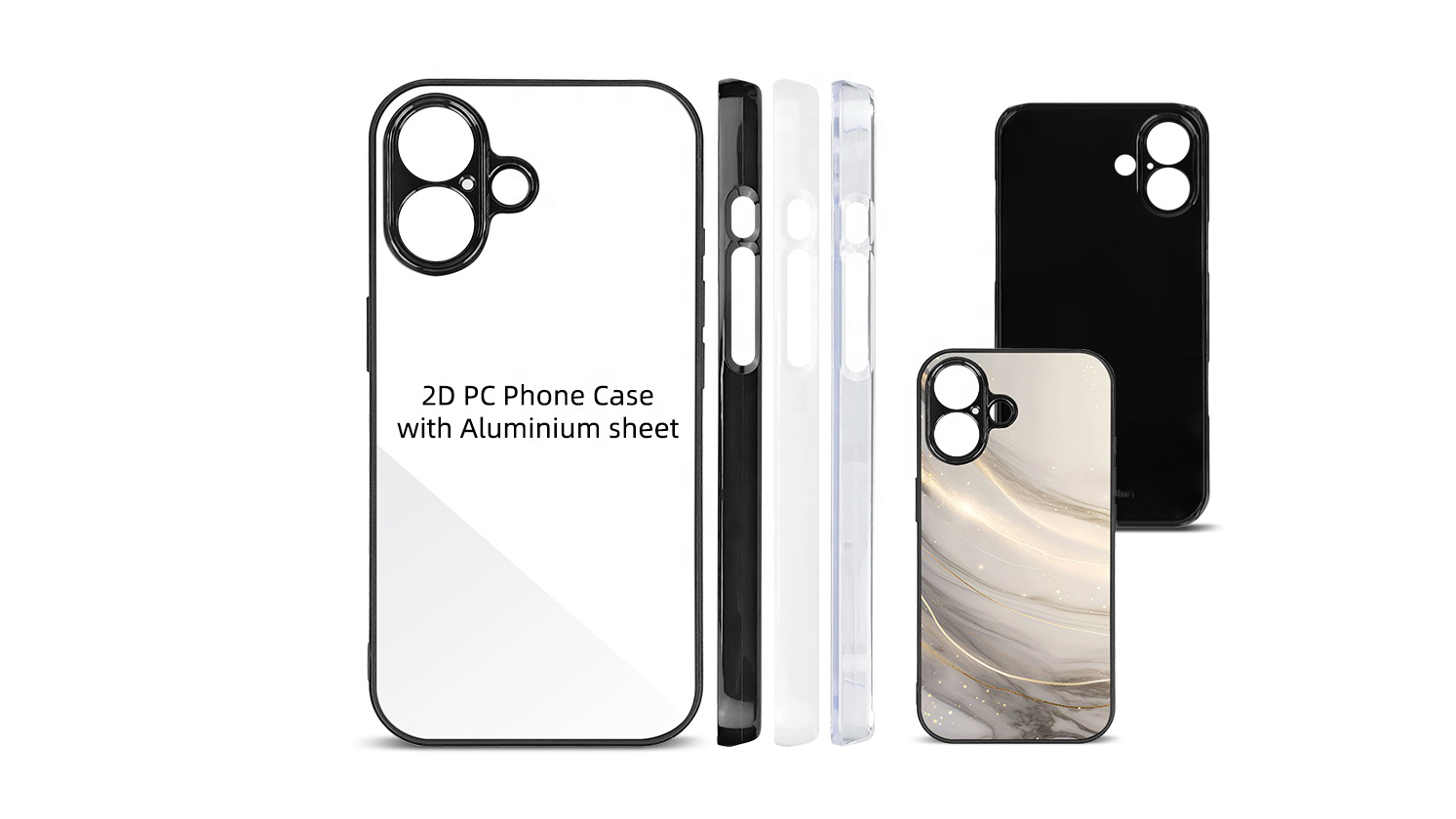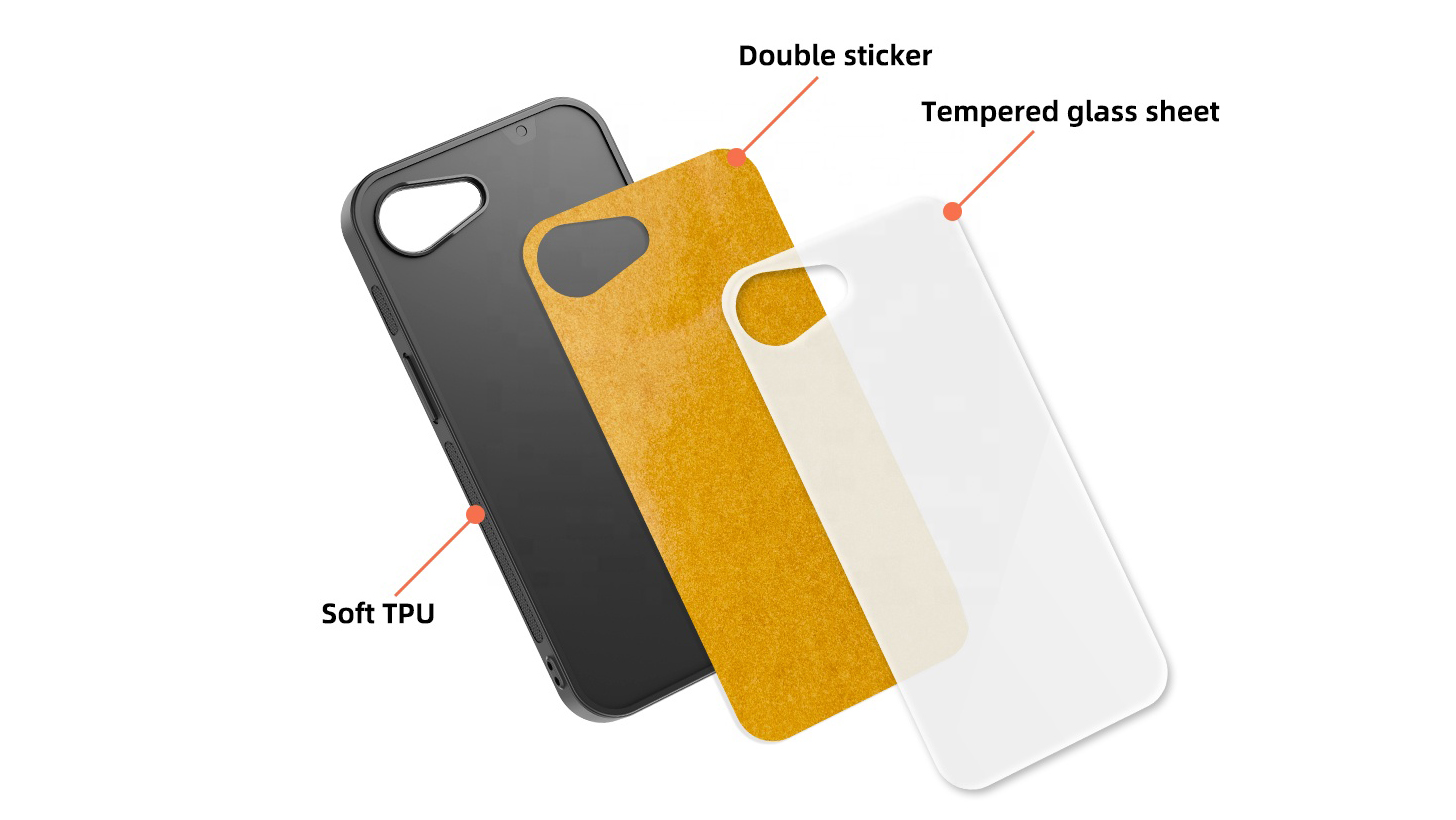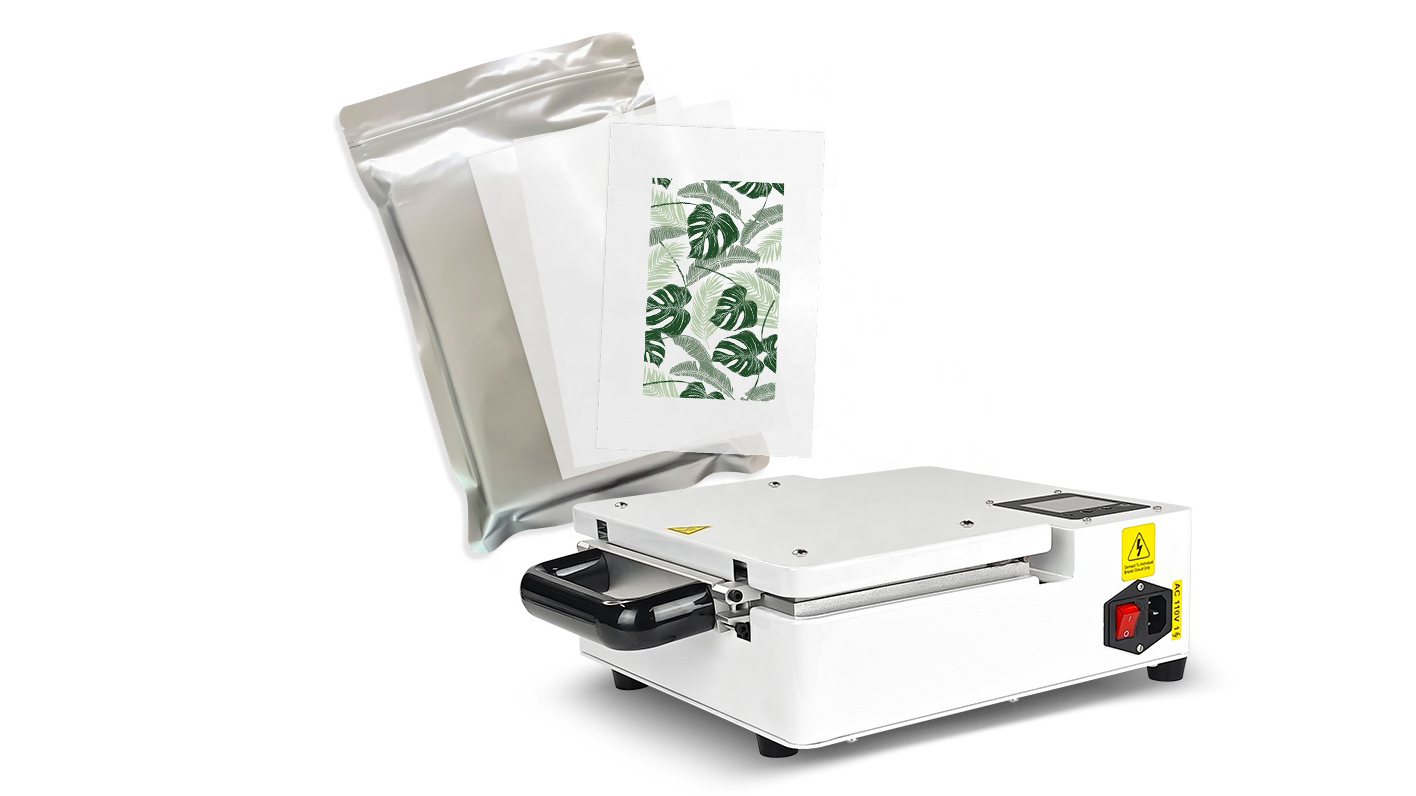
If you want your sublimation phone case to look great and last a long time, you need to focus on quality from the start. Choose a sublimation phone case made for durability. Use the best sublimation ink and paper you can find. Good preparation and the right process settings help you get vibrant designs that stay bright. When you follow these tips, your sublimation projects will stand out with both quality and style.
Key Takeaways
Pick phone cases made of aluminum or polyester. Make sure the surface is smooth and has the right certifications. This helps you get the best sublimation results.
Use good sublimation ink and paper that fit your printer. This will help your designs look bright, clear, and last a long time.
Get your artwork ready by sizing and mirroring it. Add safe zones and bleed areas. This stops misalignment and blank spots from happening.
Use printers and heat press machines that work with sublimation. Set the right temperature and pressure. This makes your prints bright and strong.
Clean your sublimation phone cases often. Do not use harsh chemicals, sunlight, or water. This keeps your designs bright and your cases strong.
Materials for Sublimation Phone Case

Choosing Quality Phone Cases
To make your sublimation phone case last, start with good materials. Not every phone case works for sublimation printing. You should pick cases made from aluminum or polyester-based materials. These materials help the ink stick better. Your designs will stay bright and clear.
Here’s a simple table showing what makes a phone case good for sublimation:
Attribute | Details |
|---|---|
Material | Aluminum or Polyester |
Certifications | CE, FCC, RoHS, ISO |
Usage | Sublimation phone case printing |
Garantía | 1 Year |
Production Capacity | 4000+ pieces weekly |
Origin | Guangdong, China |
Tip: Always look for certifications like CE, FCC, RoHS, and ISO. These show the phone case meets important standards and is good for sublimation.
Make sure the case has a smooth surface. This helps your images transfer without faded spots. Using the right case helps your sublimation phone cases resist fading and damage. Your images will look new for a long time.
Selecting Sublimation Ink and Paper
The ink and paper you use are also important. Sublimation inks are special. They turn into gas when heated and bond with the phone case. This makes your designs last and stops them from cracking or peeling.
Pick sublimation paper that matches your printer and ink. Papers with high transfer efficiency give you bright colors and sharp images. Choose paper that weighs between 110-125 gsm. This helps the ink move well and keeps your images clear. Some papers have coatings that hold the dye and release it smoothly. Your sublimation phone case will look great even after lots of use.
Pick polyester or polymer-coated cases for the best results.
Use inks and papers made for sublimation printing.
Try different brands to see which gives the brightest images.
With the right materials, your sublimation phone cases will look great and last a long time.
Preparing Sublimation Designs
Getting your sublimation designs ready is a big step in making phone cases that look sharp and last. You want your artwork to fit the case perfectly, with no blank spots or cut-off edges. Let’s break down how you can do this.
Sizing and Mirroring Artwork
First, you need to size your artwork to match the phone case. Every phone model has its own shape and camera cutout. You should check the template for your case and make sure your designs fit inside the outline. If you skip this step, your sublimation designs might not line up right.
Always mirror your artwork before printing. This means you flip the image so it looks backward. When you press the design onto the case, it will transfer the right way. If you forget to mirror, your text or logo will come out reversed.
Tip: Double-check the size and mirrored image before you print. This saves you time and materials.
Safe Zones and Bleed Areas
Safe zones and bleed areas help you avoid blank spaces and missing parts in your designs. The safe zone is the area where you keep important parts of your design, like text or logos. The bleed area is extra space around the edge. You fill this with background color or patterns. This way, if the case shifts a little during pressing, your sublimation designs still cover the whole case.
Here’s a quick example for two phone models:
Phone Model | Safe Zone (mm) | Bleed Area (mm) |
|---|---|---|
iPhone 14 | 65 x 140 | 70 x 145 |
Samsung S23 | 67 x 143 | 72 x 148 |
You want to optimize the design for the product by keeping all key elements inside the safe zone. Let the background stretch into the bleed area. This makes your designs look professional and complete.
If you place your artwork right, your sublimation designs will have no blank spaces or cut-off edges. You get a phone case that looks great from every angle.
Equipment and Settings
Compatible Printers
You want your sublimation prints to look good and last long. The printer you use matters a lot. Not all printers can do sublimation. You need a printer that works with sublimation ink and paper. Some printers have special tools to help you get better prints.
Here is a table with two good printers for sublimation:
Printer Model | Compatibility Features | Impact on Sublimation Quality |
|---|---|---|
Epson SureColor F570PRO | – PrecisionCore Micro TFP printheads | – Precise ink droplet control for clear, detailed graphics |
HP Stitch S500 | – Spectrophotometer for color calibration | – Accurate and uniform color matching |
Both printers help you get bright and sharp colors. The Epson F570PRO can print very clear images. The HP Stitch S500 uses smart color tools to keep colors right. These features make printing easier and more dependable.
Heat Press Settings
Your heat press is just as important as your printer. You need even heat and steady pressure for good results. If the heat is not even, your design may fade or look uneven. Some heat presses have smart features to help you control the process.
The heating system keeps the temperature steady for every print.
Chrome-plated cylinders help keep the heat even.
100% Nomex felt makes the process more reliable.
Automatic heating and cooling systems help you control the temperature.
A NoBreak system protects your work if the power goes out.
Fixed unwinder and rewinder make setup faster.
Recipe settings let you change temperature and speed for each job.
A strong heat press helps your projects last longer and look better. When you use the right tools, your sublimation prints will be bright and last a long time.
Sublimation Process Steps

Positioning Transfer Paper
Getting your transfer paper in the right spot is one of the most important steps in sublimation printing. If you want your designs to look sharp and last, you need to line up everything just right. You can use special rulers or guides made for heat transfer. These tools help you place your designs quickly and accurately every time.
Some people like to fold the phone case blank or the transfer paper in half to make a centerline. This crease gives you a guide for centering your designs. You can also use design software like Adobe Illustrator or Canva to plan out where your designs will go before you print. This helps you see if everything fits and lines up.
Here are some tips to help you position your transfer paper:
Use alignment rulers or guides for fast and accurate placement.
Fold your blank or transfer paper to create a centerline for easy centering.
Secure the transfer paper with heat-resistant tape. This keeps it from moving during pressing.
Try laser alignment systems if you want extra precision, especially for big batches.
Test your setup on a sample case before you start a large run.
Tip: Always double-check your placement before pressing. A small shift can ruin the look of your sublimation designs.
Avoiding Shifts and Misalignment
Shifts and misalignment can mess up your designs and waste materials. You want your sublimation printing to look professional, so you need to keep everything steady. Heat-resistant tape is your best friend here. Tape down the edges of your transfer paper so it stays put when you close the heat press.
If you work with a lot of cases, try batching them by size and design. This helps you keep placement consistent. Some people use laser guides for even more accuracy. These tools shine a light on your blank, showing you exactly where your designs will go.
You can also use a simple checklist:
Tape down all sides of the transfer paper.
Check that the design lines up with the safe zone and bleed area.
Press down gently on the paper before closing the heat press.
Note: Even a tiny shift can leave blank spots or make your designs look crooked. Take your time with this step for the best results.
Over and Under-Pressing
The right amount of heat and pressure is key to strong, long-lasting sublimation designs. If you press too long or use too much heat, your colors can fade or look washed out. If you press too little, the ink may not bond well, and your designs can peel or fade fast.
You want to follow the settings recommended for your blanks and transfer paper. Most phone cases need about 385°F to 400°F for 60 seconds, but always check the instructions for your materials. Use steady, even pressure. Too much pressure can warp the case or blur your designs. Too little pressure can cause weak transfers.
Here’s a quick table to help you remember:
Problem | Cause | Solution |
|---|---|---|
Faded colors | Over-pressing | Lower time or temperature |
Weak transfer | Under-pressing | Increase time or pressure |
Warped case | Too much pressure | Use moderate, even pressure |
Blurry designs | Shifting or over-press | Secure paper, adjust settings |
Callout: Always test your settings on a sample case before starting a big batch. This gives you protection against wasted materials and helps you get the best results.
When you follow these steps, your sublimation printing will create vibrant, durable designs. You give your phone cases the protection they need to stay bright and beautiful for a long time.
Design Tips for Sublimation Phone Cases
Avoiding Pure White in Designs
When you create sublimation designs, you might want to use pure white areas for a clean look. However, sublimation ink is translucent, so the color of the phone case underneath can change how your designs appear. If you use pure white, it often shows the base color of the case, which can have a slight blue, magenta, or green tint. This can make your images look dull or off-color.
Sublimation ink blends with the case, so pure white areas may not look as bright as you expect.
Always test your designs on a white polyester case before printing a big batch.
If you want white in your design, use a white phone case as your base and avoid leaving large pure white spaces in your artwork.
You get more vibrant designs when you fill your artwork with color and avoid relying on pure white. This approach helps your colors pop and keeps your phone cases looking fresh and bright for a long time.
Tip: Fill backgrounds with soft colors or subtle patterns instead of leaving them white. This trick hides any color shifts and boosts the vibrancy of your sublimation designs.
Using Drop Shadows
Drop shadows can make your designs stand out and look more professional. When you add a drop shadow to text or images, you create a sense of depth. This effect helps important parts of your design pop against the background, especially if the phone case has curves or cutouts.
Here’s how you can use drop shadows effectively:
Use a soft, dark shadow behind light-colored text or graphics.
Adjust the opacity so the shadow looks natural, not harsh.
Keep the shadow close to the object for a subtle effect.
Drop shadows also help hide small alignment issues that can happen during pressing. If your design shifts a little, the shadow can cover up the edge and keep your phone case looking sharp.
Color Modes and Accuracy
Getting the colors right in your sublimation designs is super important. You want your printed phone cases to match what you see on your screen. To do this, you need to use the correct color mode and manage your colors carefully.
Most design software lets you choose between RGB and CMYK color modes. RGB works best for screens, but printers use CMYK. If you design in RGB and print without converting, your colors might look different or less vibrant. Always switch your artwork to CMYK before printing. This step helps you get accurate colors and keeps your designs looking consistent.
You can also improve color accuracy by:
Calibrating your monitor so the colors you see match the printed result.
Using ICC profiles for your printer and sublimation paper.
Doing a test print before making a full batch.
These steps help you avoid surprises and make sure your vibrant designs look just as good on the phone case as they do on your computer.
Note: Color management is key for long-lasting designs. When you use the right color mode and test your prints, you get reliable, professional results every time.
Create Sublimation Designs for Longevity
If you want your phone cases to last, you need to think about durability from the start. The way you create sublimation designs can make a big difference in how well they hold up over time.
Use high-resolution graphics and high-quality sublimation inks and papers. This gives you sharp, vivid prints that resist fading.
Prepare your designs with bleed areas and safe zones. Make sure your artwork covers the whole case, including the edges and around the camera cutout.
Choose phone cases with metal inserts for extra strength and better print quality.
After you finish pressing, you can spray a clear protective coating or use a laminate to shield your design from scratches and moisture.
Always apply the right heat and pressure during pressing. Test your settings with a sample case to avoid mistakes.
Clean your phone case with a soft, damp cloth and store it away from direct sunlight. This helps prevent fading and keeps your designs looking new.
Callout: When you follow these steps, you create sublimation designs that stay bright and beautiful, even after lots of use. Your customers will love the durability and style of your long-lasting designs.
Customization and Personal Touch
Adding Unique Elements
You can make your phone case special by adding cool features. Customization helps you turn a plain case into something unique. Try using 3D sculpting or name engraving for a new look. You can also add fun things, like moving glitter or glow-in-the-dark parts. These ideas help your phone case show your style and tell your story.
Add your favorite quote or a date that matters.
Use photos of your pets, family, or friends.
Try different patterns, textures, or a bright color.
If you use strong materials like bamboo or recycled leather, your case will last longer and look nice. Many people like cases that are both tough and different. Customizing your case makes it more than just a cover—it becomes part of who you are.
Personalization Ideas
Personalization is when you make your case even more special. You can use online tools to see your design before you buy it. Some brands let you try out colors and fonts with AI helpers or AR previews. This makes it easy to see what your case will look like.
Here are some popular ways to personalize your case:
Option | Description |
|---|---|
Name Engraving | Add your name or initials |
Photo Printing | Use your favorite images |
Color Choices | Pick from a wide range of colors |
Material Selection | Choose eco-friendly or shock-proof materials |
Research shows people want products that match their style. Customization is popular because it lets you show who you are. You get to pick everything, from the design to the material. This makes your case feel special and important. Many people now want custom phone cases that last and fit their life.
Customization lets you decide how your case looks. You can make a phone case that fits your needs and shows your creativity. With so many choices, you can always make your phone case your own.
Care for Sublimation Phone Cases
Cleaning and Maintenance
You want your sublimation phone cases to look new for as long as possible. Cleaning them the right way helps keep the colors bright and the case strong. Use a soft, damp cloth to wipe away dirt and dust. Avoid using harsh chemicals or rough sponges. These can scratch the surface and lower the protection your case gives your phone.
If you spill something sticky on your case, just use a little mild soap and water. Dry it with a soft towel. Never soak your case in water. That can weaken the drop protection and make the case less safe for your phone.
Tip: Clean your case once a week. This keeps it looking fresh and keeps the drop protection working well.
Protecting from Sunlight and Moisture
Sunlight and moisture can damage sublimation phone cases over time. Too much sun can fade the colors and weaken the protection. Try to keep your phone out of direct sunlight when you are not using it. If you leave your phone in a hot car, the heat can also hurt the drop protection.
Moisture is another thing to watch out for. Water can get inside the case and lower the protection level. If your case gets wet, dry it right away. Store your phone in a cool, dry place when you are not using it. This helps keep the drop protection strong and the colors bright.
Here’s a quick table to help you remember:
Problem | What to Do for Protection |
|---|---|
Sunlight | Keep out of direct sun |
Moisture | Dry case quickly if it gets wet |
Dirt & Dust | Wipe with soft, damp cloth |
Taking care of your sublimation phone cases means you get better drop protection and longer durability. When you follow these steps, your case will keep your phone safe and your design looking great.
You can create phone case designs that stand out and last. Start with quality materials and prepare your designs with care. Use the right printer, ink, and heat press settings. Follow these best practices:
Sublimation inks lock your designs into the case, boosting durability.
Pre-pressing and using heat-resistant tape keep your designs sharp.
High-resolution designs and color calibration make your designs pop.
When you use these steps, your designs stay bright and strong. Take pride in your work and enjoy designs that look great every day.
FAQ
How do I stop my sublimation phone case from fading?
Keep your case out of direct sunlight. Clean it with a soft, damp cloth. Avoid harsh chemicals. Use high-quality ink and paper for the best results. Your design will stay bright longer if you follow these steps.
Can I sublimate on any phone case?
No, you need a case with a polyester coating or made from aluminum. Regular plastic or silicone cases will not work. Always check the product label before you start your project.
Why does my design look blurry after pressing?
Blurry designs usually mean the transfer paper shifted or you used too much pressure. Secure the paper with heat-resistant tape. Test your heat press settings on a sample case first.
What should I do if my colors look dull?
Switch your design to CMYK color mode before printing. Use ICC profiles for your printer and paper. Calibrate your monitor. Test print to check color accuracy. High-quality ink also helps your colors pop.
Can I wash my sublimation phone case?
Yes, you can clean it with a soft, damp cloth. Do not soak the case or use strong cleaners. Gentle cleaning keeps your design looking new and protects the case.

